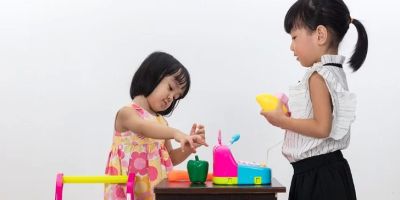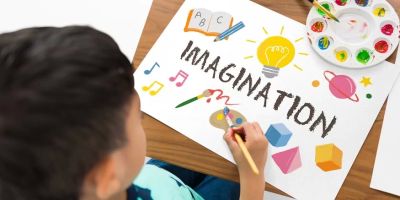Best Toy Blocks for Creative Play: A Parent’s Guide to Enhancing Imagination
As parents, we’re always looking for ways to foster creativity and learning in our children. One of the best tools for encouraging imaginative play is toy blocks. Whether they’re building castles, constructing roads, or designing their own cities, toy blocks allow children to express themselves while developing essential skills like problem-solving, hand-eye coordination, and spatial awareness. In this guide, we’ll explore the best toy blocks for creative play, the benefits of these toys, and how they can contribute to your child’s cognitive and emotional development.
1. Why Toy Blocks are Essential for Creativity
Toy blocks have been a staple of childhood for generations, and for good reason. These versatile toys provide endless opportunities for creative play, allowing children to design, build, and experiment in ways that stimulate their imaginations. When children work with toy blocks, they are not just playing—they’re also learning valuable life skills that will serve them well as they grow. From fine motor skills to problem-solving abilities, building with blocks helps children develop in multiple areas simultaneously.
For younger children, blocks are often one of the first tools they use to experiment with balance, shape recognition, and construction. As they grow, these toys become a more advanced means of expression, allowing kids to create intricate structures and problem-solve when things don’t quite fit together as planned. Additionally, building with blocks encourages collaboration, as children often work together to create something bigger than they could achieve on their own.
2. Types of Toy Blocks for Creative Play
Not all toy blocks are created equal. There are various types available, each offering unique features that can appeal to different age groups and developmental stages. Let’s explore some of the top options for promoting creative play:
- Wooden Blocks: Wooden toy blocks have been a timeless classic for decades. They’re durable, safe, and come in a variety of shapes and sizes. Many parents prefer wooden blocks because they are free from toxic chemicals and offer a more natural texture that children can feel and connect with. Wooden blocks also encourage open-ended play, allowing kids to create anything their imagination can dream up. Popular brands like Melissa & Doug and Hape offer excellent wooden block sets for toddlers and young children.
- LEGO Sets: LEGO sets are perfect for older children who want to create more detailed structures. These plastic blocks snap together easily and come in a wide range of themes, from castles and cars to spaceships and cities. The precision of the LEGO design allows children to create complex, functioning structures while developing fine motor skills and learning about engineering principles. LEGOs also come with instructions to guide young builders, helping them develop patience and problem-solving abilities.
- Magnetic Blocks: Magnetic building blocks, such as Magformers and Playmags, are becoming increasingly popular for creative play. These blocks use magnets to easily attach to each other, making them easier to build with compared to traditional blocks. Magnetic blocks also provide a new avenue for creativity, as they can be used to build 3D structures, vehicles, and even abstract shapes. These toys are ideal for children who enjoy experimenting with balance and magnetism.
- Foam Blocks: Foam blocks are a soft alternative to traditional wooden or plastic blocks. They are perfect for younger children who might not yet have the coordination to handle harder materials. Foam blocks come in bright colors and are lightweight, making them easy for small hands to manipulate. These blocks often come in larger sizes, making them ideal for building big structures that kids can engage with physically, such as forts and walls.
3. The Benefits of Toy Blocks for Child Development
Beyond the fun and excitement of building, toy blocks have numerous developmental benefits for children. These benefits extend to cognitive, emotional, and social development, making toy blocks one of the most valuable toys for a child’s growth.
- Enhances Cognitive Skills: Building with toy blocks requires children to think critically about how to fit pieces together, balance structures, and solve problems. This encourages cognitive development and enhances their spatial awareness. As children experiment with different combinations of blocks, they start to recognize patterns, shapes, and symmetry, which are fundamental concepts in math and science.
- Improves Fine Motor Skills: As children manipulate small blocks, they develop fine motor skills, which are essential for tasks like writing, drawing, and self-care. By stacking, arranging, and moving blocks, kids improve their hand-eye coordination and dexterity, which are necessary for many other activities.
- Fosters Creativity and Imagination: The open-ended nature of toy blocks allows children to create anything their imagination can conjure. Whether they’re designing an entire city or building abstract art, blocks provide a versatile platform for imaginative expression. This fosters creativity and helps children think outside the box, promoting innovation and independent thinking.
- Encourages Social Interaction: When children play with toy blocks together, they learn important social skills such as sharing, taking turns, and collaborating. These toys provide an excellent opportunity for children to engage in group play and develop communication skills while working together toward a common goal.
4. How to Choose the Best Toy Blocks for Your Child
Choosing the right toy blocks for your child depends on several factors, including age, interests, and developmental needs. Here are some key considerations to help you make the best decision:
- Age Appropriateness: When selecting toy blocks, always check the manufacturer’s age recommendations. Younger children may benefit from larger blocks that are easier to handle, while older children may be ready for more complex sets like LEGOs or magnetic blocks.
- Safety: Ensure that the blocks are made from non-toxic materials and do not contain small parts that could be a choking hazard for younger children. Opt for brands with solid reputations for safety and quality.
- Interest Areas: Consider your child’s interests when choosing toy blocks. If they love animals, look for sets that feature animal figures. If they’re interested in architecture, choose blocks that allow for building structures like homes, castles, or towers.
- Durability: Toy blocks can take a lot of wear and tear. Wooden blocks are often the most durable, while plastic or foam blocks may need replacement after extended use. Think about how much abuse the blocks will endure before making a choice.
5. Maintaining Organization with Toy Blocks
Once you’ve chosen the best toy blocks for your child, it’s important to maintain an organized space to keep things neat and accessible. Consider using storage bins, shelves, or toy chests to keep the blocks organized and easy to find. Labeling containers by type or color can help your child learn how to clean up after playtime, fostering responsibility and organization skills.
Regularly sorting through the toy blocks can also help keep the collection manageable. As your child grows, they may outgrow certain sets or be ready for more advanced types of blocks. Keeping things organized will not only make playtime more enjoyable but will also help teach your child the importance of taking care of their belongings.
Ultimately, toy blocks are more than just a fun way to pass the time—they are an invaluable tool for creative development. By providing your child with the best toy blocks for creative play, you’re not only encouraging fun, but you’re also helping them develop skills that will benefit them for years to come.
SEO Title: Best Toy Blocks for Creative Play: Essential Guide for Parents SEO Keywords: best toy blocks, creative play blocks, kids building toys, educational blocks, toy blocks for children SEO Description: Discover the best toy blocks for creative play and how they benefit your child's development. From wooden blocks to LEGOs, find the perfect set for imaginative play.




